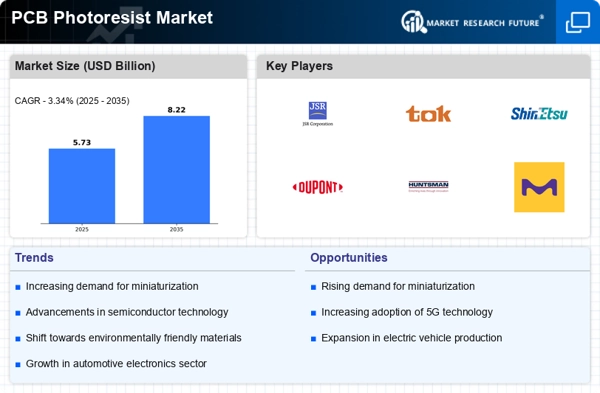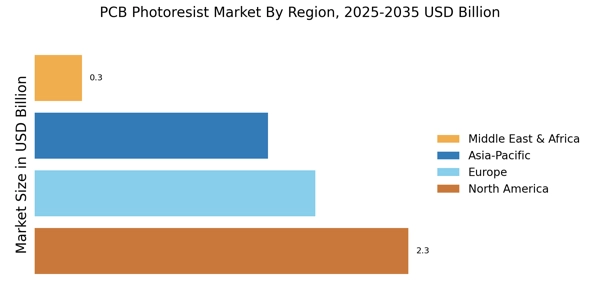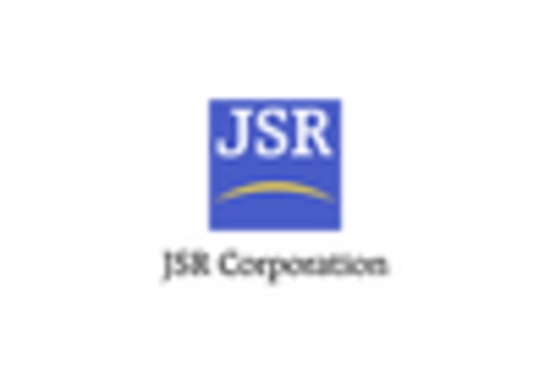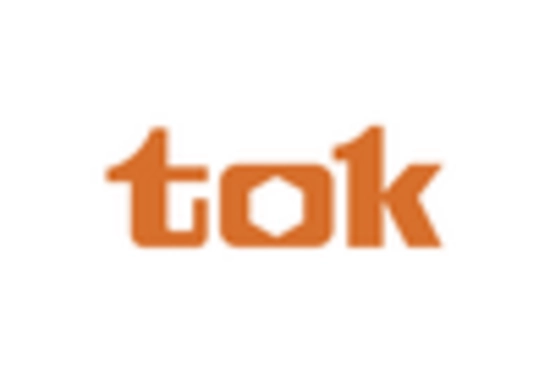Growth in Automotive Electronics
The automotive sector's transition towards electrification and advanced driver-assistance systems (ADAS) is significantly influencing the PCB Photoresist Market. With the automotive electronics market expected to surpass 300 billion USD by 2025, the demand for PCBs in vehicles is escalating. This growth is largely driven by the integration of sophisticated electronic systems that require high-performance photoresists. As vehicles become increasingly reliant on electronic components, the need for reliable and efficient photoresist materials becomes paramount. This trend not only enhances the performance of automotive electronics but also stimulates innovation within the PCB Photoresist Market, as manufacturers strive to develop materials that can withstand the unique challenges posed by automotive applications.
Rising Demand for Consumer Electronics
The increasing demand for consumer electronics is a primary driver of the PCB Photoresist Market. As technology advances, consumers are seeking more sophisticated devices, which necessitates the use of high-quality printed circuit boards (PCBs). The market for consumer electronics is projected to reach approximately 1 trillion USD by 2025, indicating a robust growth trajectory. This surge in demand directly correlates with the need for advanced photoresists that can support the intricate designs and miniaturization of PCBs. Consequently, manufacturers are compelled to innovate and enhance their photoresist formulations to meet the evolving requirements of the consumer electronics sector, thereby propelling the PCB Photoresist Market forward.
Advancements in Semiconductor Manufacturing
Advancements in semiconductor manufacturing processes are significantly impacting the PCB Photoresist Market. As the semiconductor industry continues to innovate, the demand for high-resolution photoresists that can facilitate the production of smaller and more complex chips is increasing. The semiconductor market is projected to exceed 600 billion USD by 2025, which underscores the critical role of photoresists in this sector. These materials are vital for achieving the precision required in modern semiconductor fabrication, thereby driving the demand for advanced photoresist solutions. As manufacturers seek to enhance their production capabilities, the PCB Photoresist Market is likely to experience substantial growth, fueled by the ongoing evolution of semiconductor technologies.
Increased Focus on Renewable Energy Solutions
The growing emphasis on renewable energy solutions is emerging as a significant driver for the PCB Photoresist Market. As countries strive to meet sustainability goals, investments in solar and wind energy technologies are on the rise. The renewable energy sector is expected to reach a valuation of over 1 trillion USD by 2025, which will likely lead to an increased demand for PCBs used in energy conversion and management systems. High-performance photoresists are essential for manufacturing PCBs that can withstand the operational demands of renewable energy applications. This trend not only supports the growth of the PCB Photoresist Market but also aligns with broader environmental objectives.
Expansion of Telecommunications Infrastructure
The expansion of telecommunications infrastructure is a crucial factor propelling the PCB Photoresist Market. With the rollout of 5G technology, there is a heightened demand for advanced PCBs that can support faster data transmission and improved connectivity. The telecommunications sector is projected to invest over 1 trillion USD in 5G infrastructure by 2025, creating a substantial market for high-quality photoresists. These materials are essential for the production of PCBs that meet the stringent performance requirements of next-generation telecommunications equipment. As the industry evolves, the demand for innovative photoresist solutions is likely to increase, thereby driving growth within the PCB Photoresist Market.


















Leave a Comment